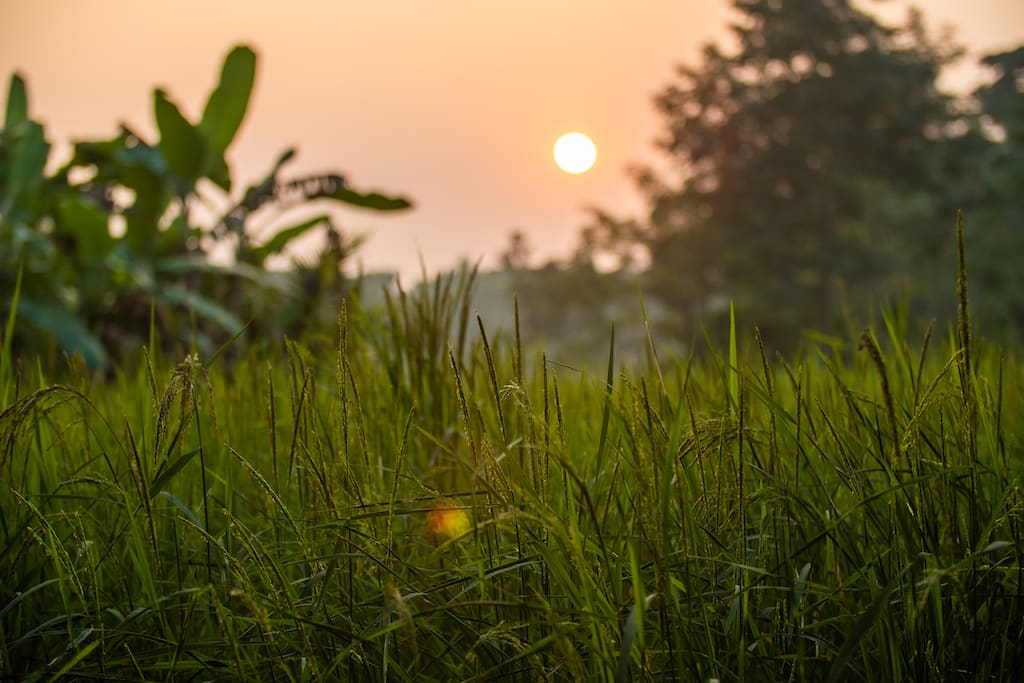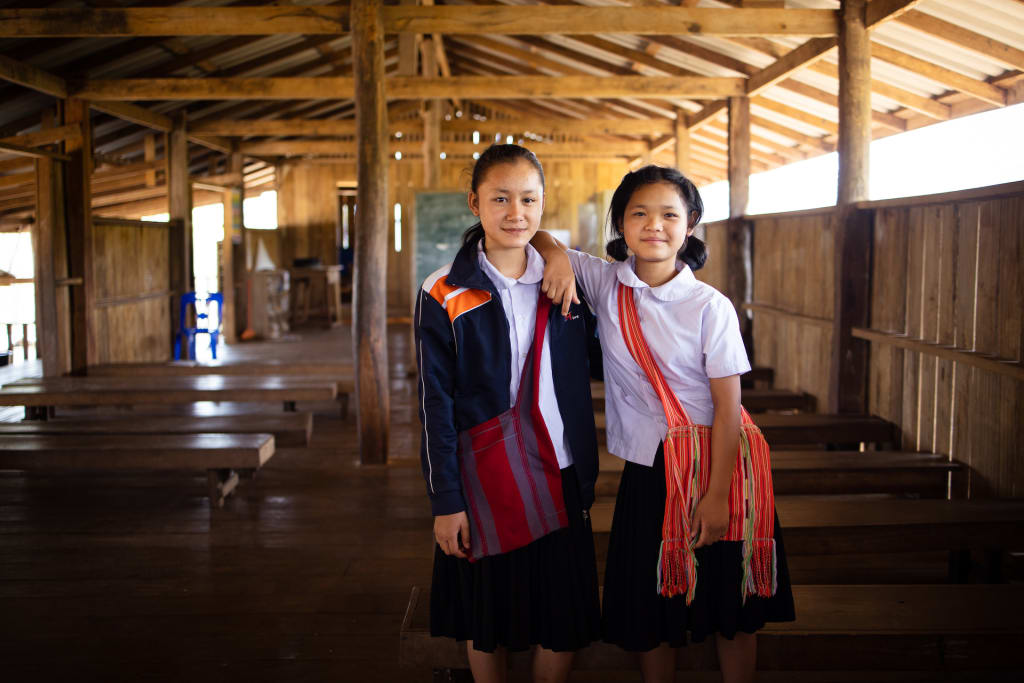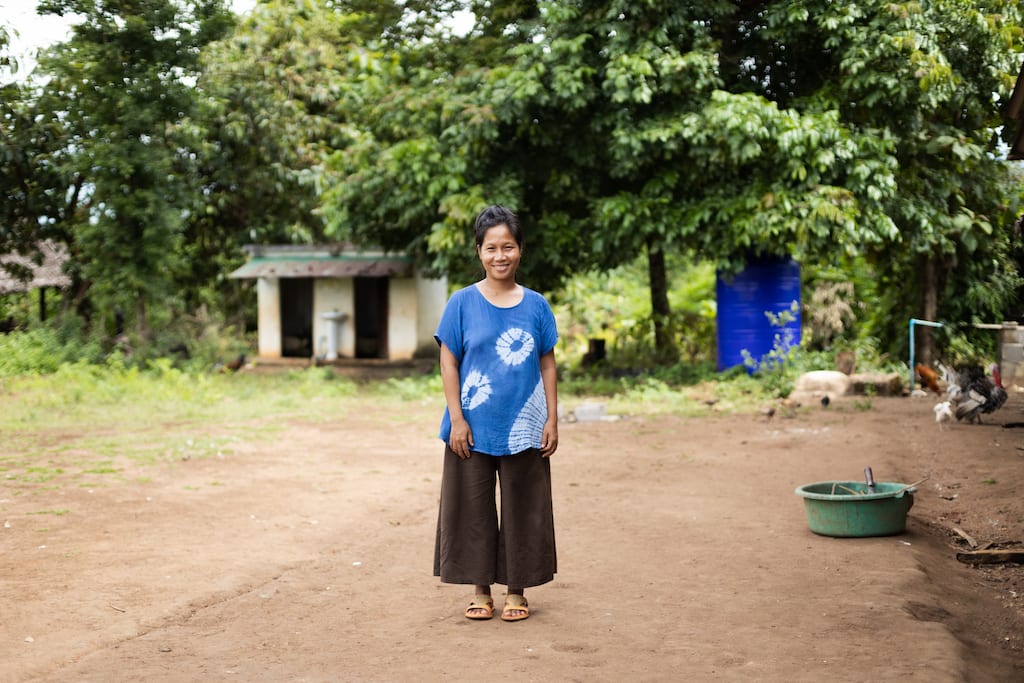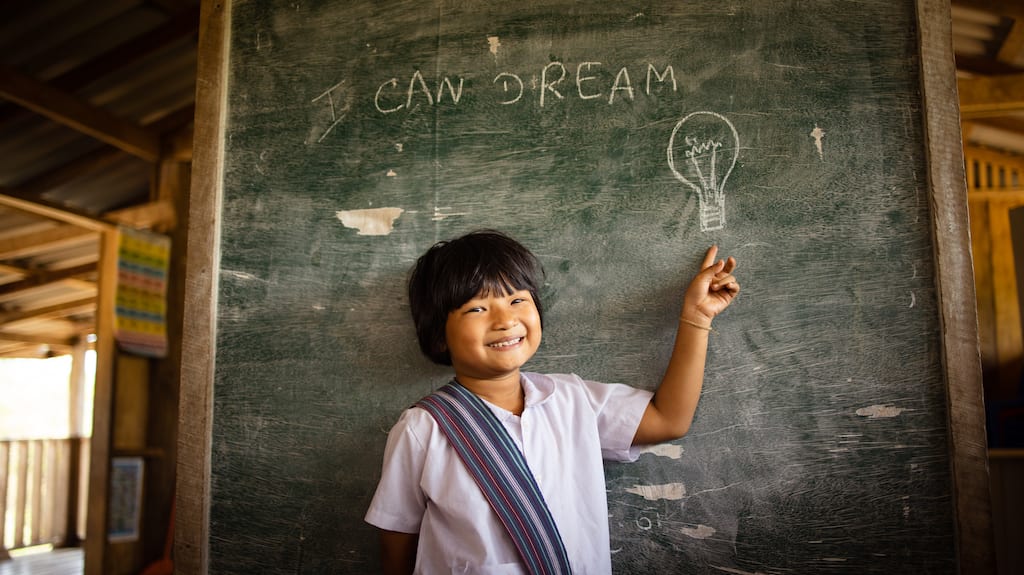Have you ever gone on a summer camping trip with your family? Even if you are a glamping person, close your eyes and imagine…
Far from the comforts of home, you spend your days hiking and canoeing, rain or shine. You breathe in the freshness of the dew on the grass that surrounds you as you wake up from a night under the stars. But the week goes by, and the canned foods you loaded in your trunk have been cooked and eaten. All your family’s clothes—covered in mud, sweat and mosquito repellent—could use a wash.
It’s time to pack up the campsite, with the anticipation of the comforts of home to motivate you.

On the hardest days of hiking in the rain, the thought of what you are going back to acts as motivation. Your kids will head back to school Monday after a long summer break. You’ll grab some groceries Monday afternoon. You will attend your doctor’s appointment Tuesday. Family camping adventure for the year is checked off the list!
Dreaming of literacy, somewhere beyond the Teaks
Though in the West, time away in remote destinations can serve as a vacation, for many people around the world, remote living is no vacation. Daily life requires an exhausting trek for even the simplest of necessities. For some, there is no doctor in town to visit. No grocery store to stock up the pantry. No school to return to as the summer sets to continue chasing literacy dreams.
The struggle of remote living is the lived reality of best friends Nawmuenawpho, 11, and Nawdalerpaw, 9, who call the remote village of Powley, Thailand, home.

Nawdalerpaw standing outside in her village of Powley.
A few kilometres from the Moei riverbank that separates Thailand from Myanmar, thin dirt trails branch away from the road, leading to tiny villages hidden in the forest of Teaks. One such village is Powley, where Nawmuenawpho and Nawdalerpaw live. Far from urbanization, there are no hospitals and no schools. Here, dreams are alive, but opportunities are scarce.
Both girls come from farming families that rely on their annual rice harvest to feed themselves through the whole year. They make a small income from their agricultural farming, supplemented by vegetables from the wild and sometimes fish from the river.
Though the provision of food is a struggle, in this region, the children’s greatest struggle is literacy and education. Sadly, this lack holds back the dreams of hopeful children like Nawmuenawpho and Nawdalerpaw, who share everything with one another—including their hopes of attending college together and becoming nurses.
“I always easily get sick, and I have a problem with my left eye. So, I want to be a nurse when I grow up,” says Nawmuenawpho.
“I want to be a nurse when I grow up, too—so when my friend is sick, I can fix her,” says Nawdalerpaw. “I have to go to school, and I dream that I can study in college together with Nawmuenawpho.”
Building school walls, tearing down literacy barriers
The girls heard the news of the church in their community partnering with their Compassion centre to build a school for the community. Their hearts soared with excitement. Their dreams of literacy would stay alive.

Nawmuenawpho (left) and Nawdalerpaw (right) together in their classroom.
One small step at a time, the staff and volunteers used all the materials they had to create a small and simple building, with each class separated from the next by a chalkboard. It’s not the largest or the best equipped, but this school means the world to the families of Powley.
“Having a school for children here in Powley helps parents like me to feel relieved. Because if we had to send our children to school at another place, far away, as a mother, I would worry so much for my children,” says Nawjae, Nawmuenawpho’s mother.

The passion of the staff at the school is to give the children of Powley opportunities that their parents’ generation never had. For their parents, school was always inaccessible.
“I’m from another village that is quite far from here. After I graduated with a public health degree, I felt called to help children in their development here in Powley. My heart wants to see children here able to reach education as much as they can,” says Naw Wha Whay, the school principal and a tutor at the Compassion centre in Powley.
The barriers to education are being torn down as the new school walls are rising up as a beacon of hope in the community.
Where do we go from here?
As much as Naw Wha Whay and the other staff hope to help children of all ages access education, their newly built school could only offer classes up to grade four. The girls, both in grade four, were frightened that this year would be the end of their education. The light of their dreams was fading without any opportunity to study further.

“The nearest school is about two hours away from here, and their student dormitory is full. They said the only way we could send our children to the school there was if we could build a facility for them to stay—another dormitory,” says Naw Wha Whay.
As the end of the school year approached, grade four students anxiously wondered what was next for them if there was no further school. The crisis stirred the hearts of the centre staff to find a solution.
“The biggest wish I have is that we can have a school for me and a library with many story books that I can read. I still dream that I can study to go to college,” says Nawdarlerpaw.
Finding paths to education, one step at a time
In search of a solution, the centre staff reached out to a school in a nearby area. And, like an answered prayer, the school agreed to help the children of Powley to continue their literacy training through grades five and six!

The plan was simple yet effective. Every month, staff from the neighbouring school planned to travel to Powley with schoolwork for the older students. They would then mark and return their exam papers after the students had completed them.
“It was the best day of my life when I heard I could go to school for grade five. And I don’t have to be far away from my family!” says Nawdalerpaw.
After the children finish grade six, the Compassion centre and church will discuss the children’s options with their parents. They’ll find a school to continue their education. It may mean that children must travel to another area and stay at a school dormitory. But, they can come home during all school holidays and breaks.
As with the expansion of their own school building, the centre staff and students are taking one step at a time. But, as they wait, they will continue to give thanks for the ability to keep the literacy dreams of kids alive and thriving. They will rejoice that in their four simple walls, what once felt impossible is becoming tangible.

“I love to go to school so much because there I can learn many things and be with my friends. I love using my imagination when I read storybooks at school and I can dream! And I believe that my dreams will come true,” says Nawmuenawpho.
One step at a time. With each step forward in faith, the children of Powley are continuing to see what once felt impossible become possible.
Because of the small steps of faith of a caring church and the Compassion staff, the children of Powley can access education and improve their literacy.
They can dream of brighter days to come.
They can step into the people that God created them to be.
Here are some ways you can pray for the village of Powley in their journey of making education accessible:
- Pray for more teachers for the school in Powley village.
- Pray for school materials like books that children can read to grow their imaginations and literacy.
- Pray for Nawmuenawpho’s health. She has been weak and often sick since she was young.
- Pray for girls like Nawdalerpaw and Nawmuenawpho. They are at the age where girls start to have their monthly period, and when they have their period, they can’t go to school because they don’t have sanitary products.
- Pray for centres and churches that are serving children in the border regions. Pray for God’s provision and protection for their own families.
You can play a role in keeping literacy dreams alive for children.
Help children reach a brighter tomorrow, one step at a time.
Words by Laura Phillips and Piyamary Shinoda


